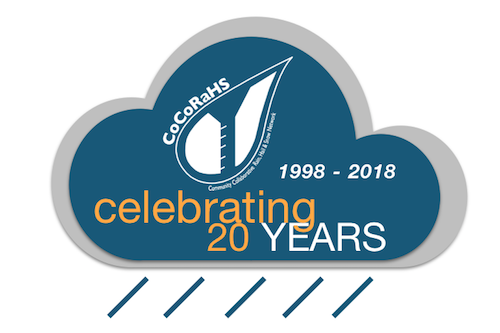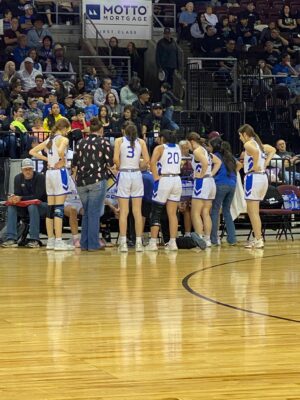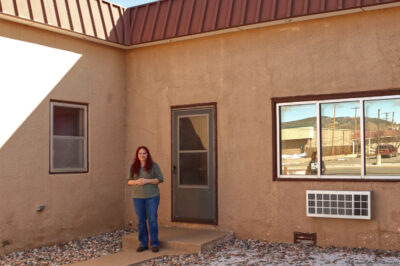Special to KRTN Multi-Media

The Community Collaborative Rain, Hail and Snow Network (CoCoRaHS) began on June 17, 1998. With a few observers along Colorado’s Front Range, we had no idea that the network would become what it is today, with over 20,000 active observers in the United States, Canada, Puerto Rico, the U.S.Virgin Islands and the Bahamas. Please join us below for a series of messages that will be running during May and June 2018 as part of our 20 year Anniversary Celebration.
CoCoRaHS – Celebrating 20 Years: CoCoRaHS spreads across the United States
From the very beginning of CoCoRaHS in 1998, the radar meteorology research group in the Department of Atmospheric Science at Colorado State University had watched with interest. Data collected by volunteers with plastic rain gauges and foil-wrapped Styrofoam pads repeatedly proved useful in the research efforts of the CSU CHILL Radar team (link to CHILL). In an effort to help CoCoRaHS, one of their scientists, Dr. Rob Cifelli, helped draft a proposal to the National Science Foundation to expand CoCoRaHS from Colorado into portions of Kansas, Nebraska and Wyoming. Much to our surprise and amazement, the proposal was funded in 2003, providing support to hire a small staff — a project coordinator and a Web developer. Within a year, a new and greatly advanced website was up and running and volunteers were signing up in our neighboring states. National Weather Service offices and State Climatologists from these adjacent states were immediately eager to get involved. Nebraska took special ownership in the idea and invited Nolan Doesken to speak to the Nebraska Natural Resource Districts and provide detailed training in precipitation measurement procedures. Soon after, the Nebraska Rainfall Analysis Information Network was launched – affectionately named NeRAIN (pronounced “Any Rain”). The number of active volunteers quickly grew from a few hundred in 2003 to over 2,000 by the summer of 2004.
The new website provided nearly instantaneous access to state and county maps of precipitation data allowing both participants and other internet users to view and access local precipitation data for every day of the year. An impressive “Administrative” portal helped volunteer leaders to efficiently assign station names and numbers to each new volunteer and also track and communicate with these participants.
In 2004 a new CoCoRaHS national coordinator was hired. That was Henry Reges, a meteorologist with the American Meteorological Society with a business management background, and with many professional connections. During the first month on the job, he began building a national vision for the project. This included the revised name “Community Collaborative Rain, Hail and Snow” network and a sharp new logo. Julian Turner, who served both as web developer and volunteer support leader refined the website and added creative artistic touches. More training materials were also added making the website a hub both for volunteer data collectors but also for a growing number of users interested in precipitation.
As CoCoRaHS matured into a professional-looking young organization, other states took interest and began asking to join. New Mexico rolled out CoCoRaHS in 2005 with great success. At about this same time, Chad Gimmestad, a local meteorologist with the National Weather Service in Boulder developed a capability for CoCoRaHS hail and heavy rain reports to be almost instantly communicated to National Weather Service office “work stations” where they alarmed local forecasters. This new feature added a new operational value to the CoCoRaHS network – helping provide early documentation of severe and hazardous weather.
Educational activities grew in importance. Working with meteorologists from National Weather Service offices in Goodland, KS and Cheyenne, Wyoming, the CoCoRaHS team lead all-day workshops for teachers from rural schools, and conducted more field trips and learning opportunities for volunteers.
In 2006, CoCoRaHS was the recipient of an important “environmental literacy” grant from NOAA’s Office of Education. This grant specifically funded expansion of the CoCoRaHS program nationally utilizing and leveraging partnerships with State Climatologists, National Weather Service offices, universities and other interested groups. Using a thoughtful strategy of first building state-based local leadership teams, CoCoRaHS began a slow, but methodical expansion across the country from 2006 through 2009. Newspaper articles, TV news features, e-mail listserves, word of mouth and National Weather Service website announcements helped spread the network to all fifty states and the District of Columbia. The last state to join was Minnesota in 2009. Not only were our observers learning about the environment and rainfall patterns, but they were providing the nation with a daily pool of valuable rainfall data. By 2009, the number of active volunteers grew to over 12,000 making CoCoRaHS the largest source of daily rainfall measurements in the country.





